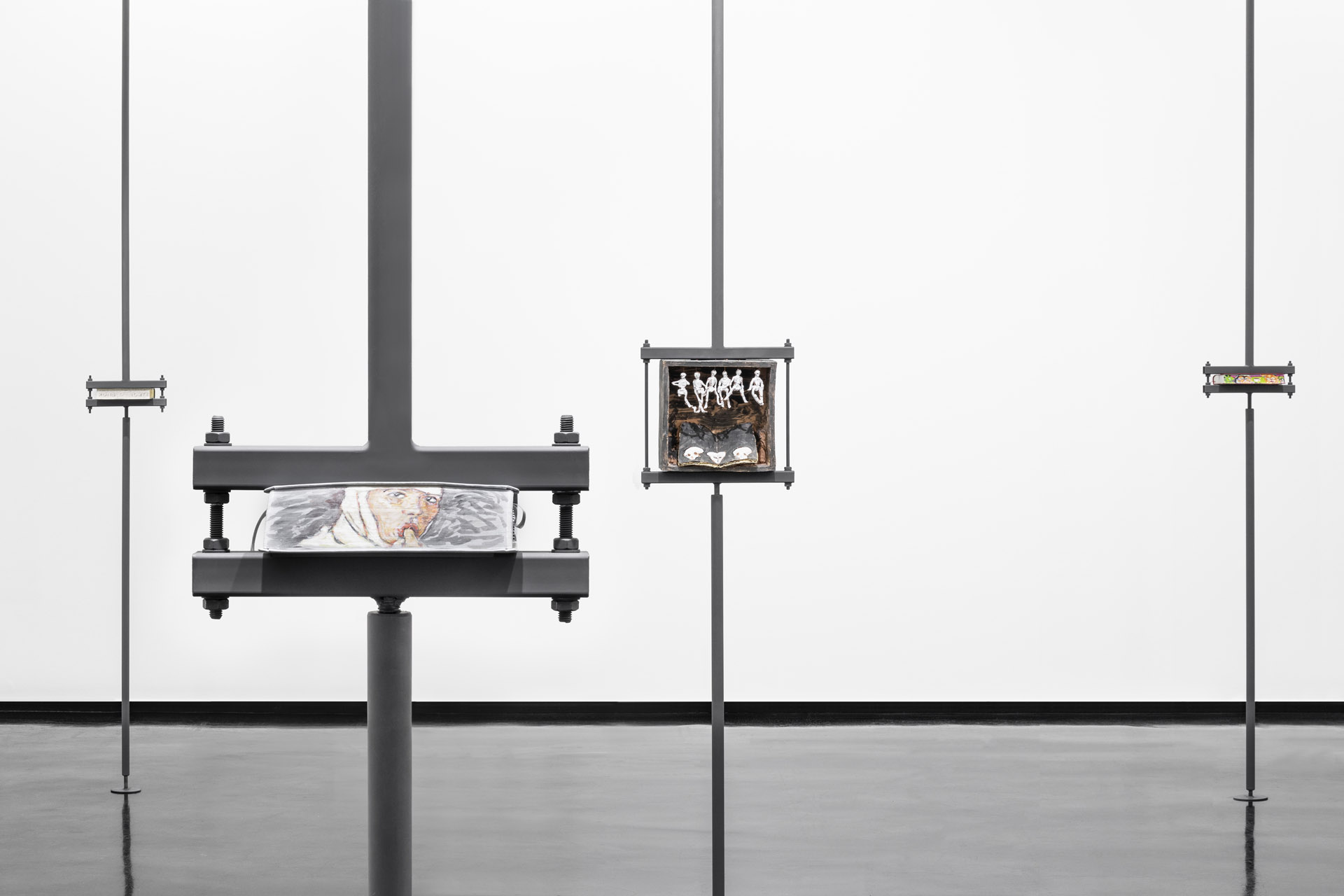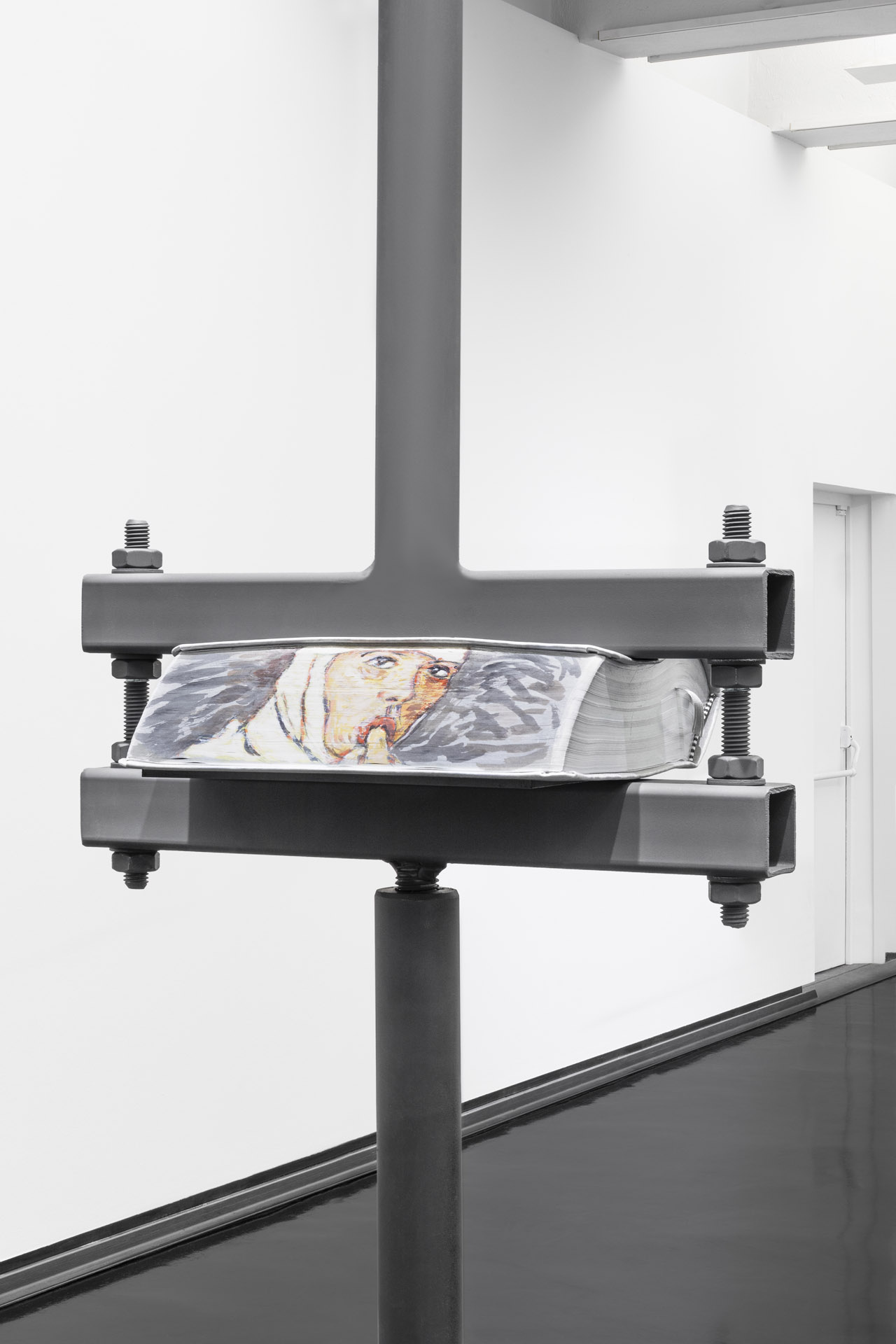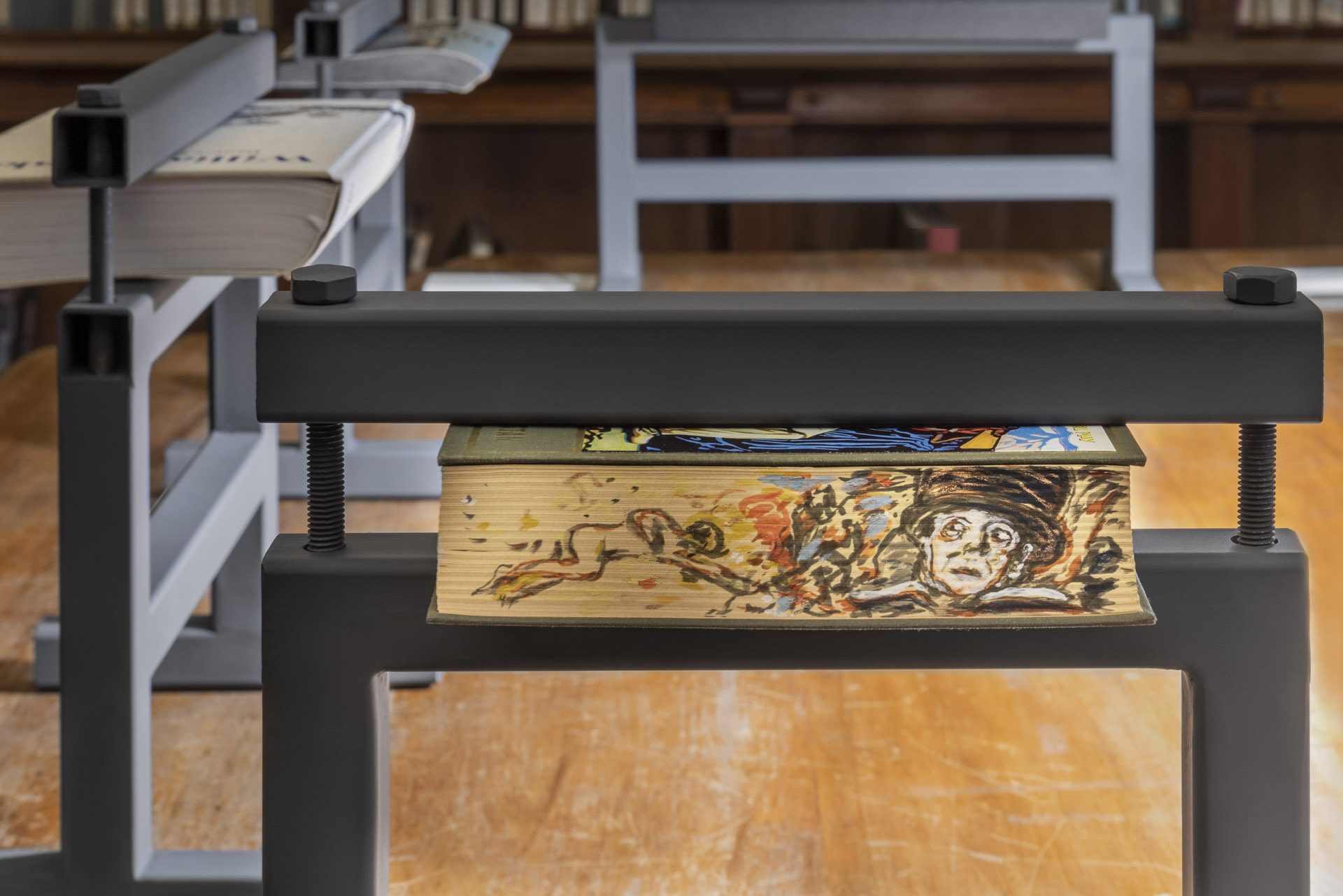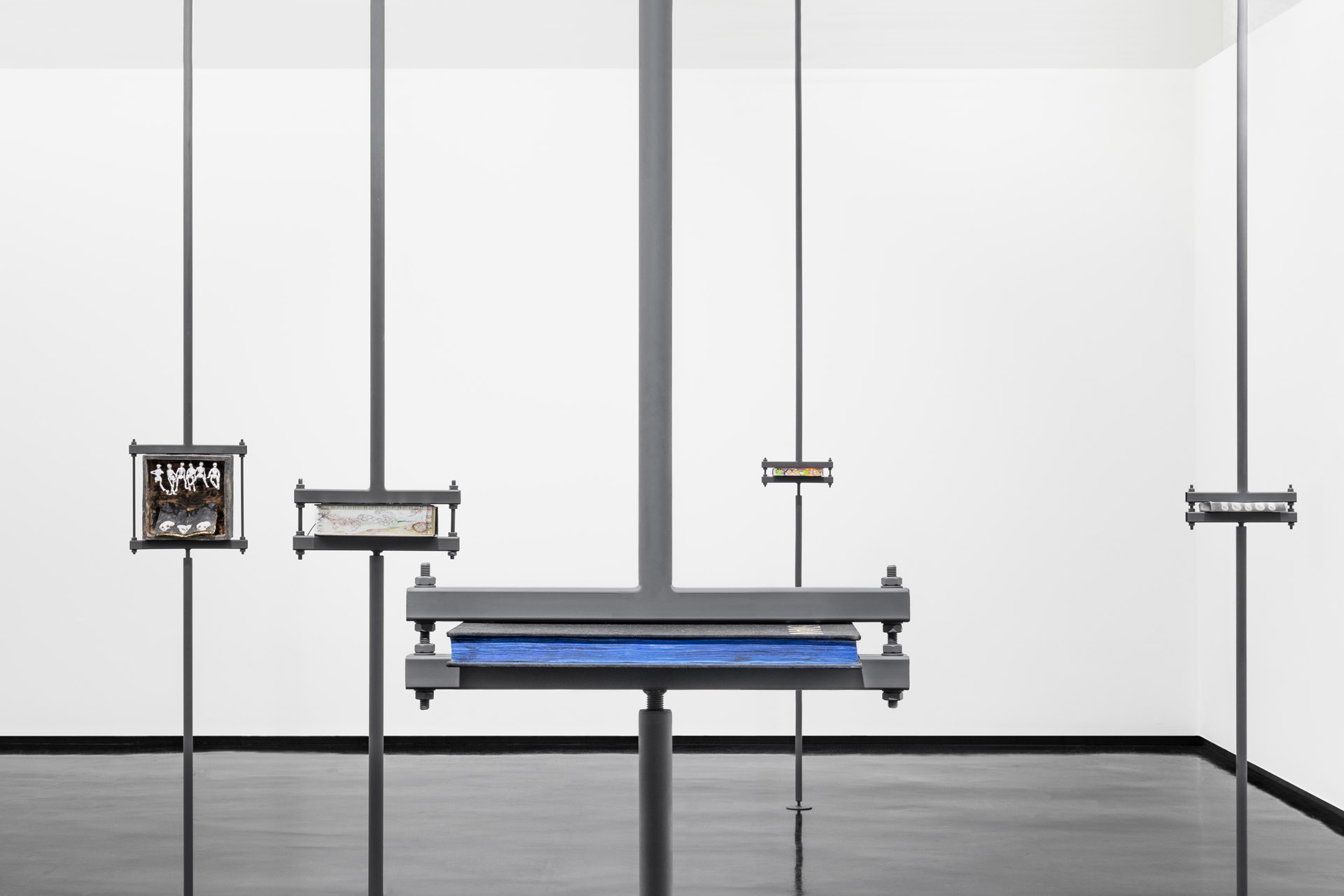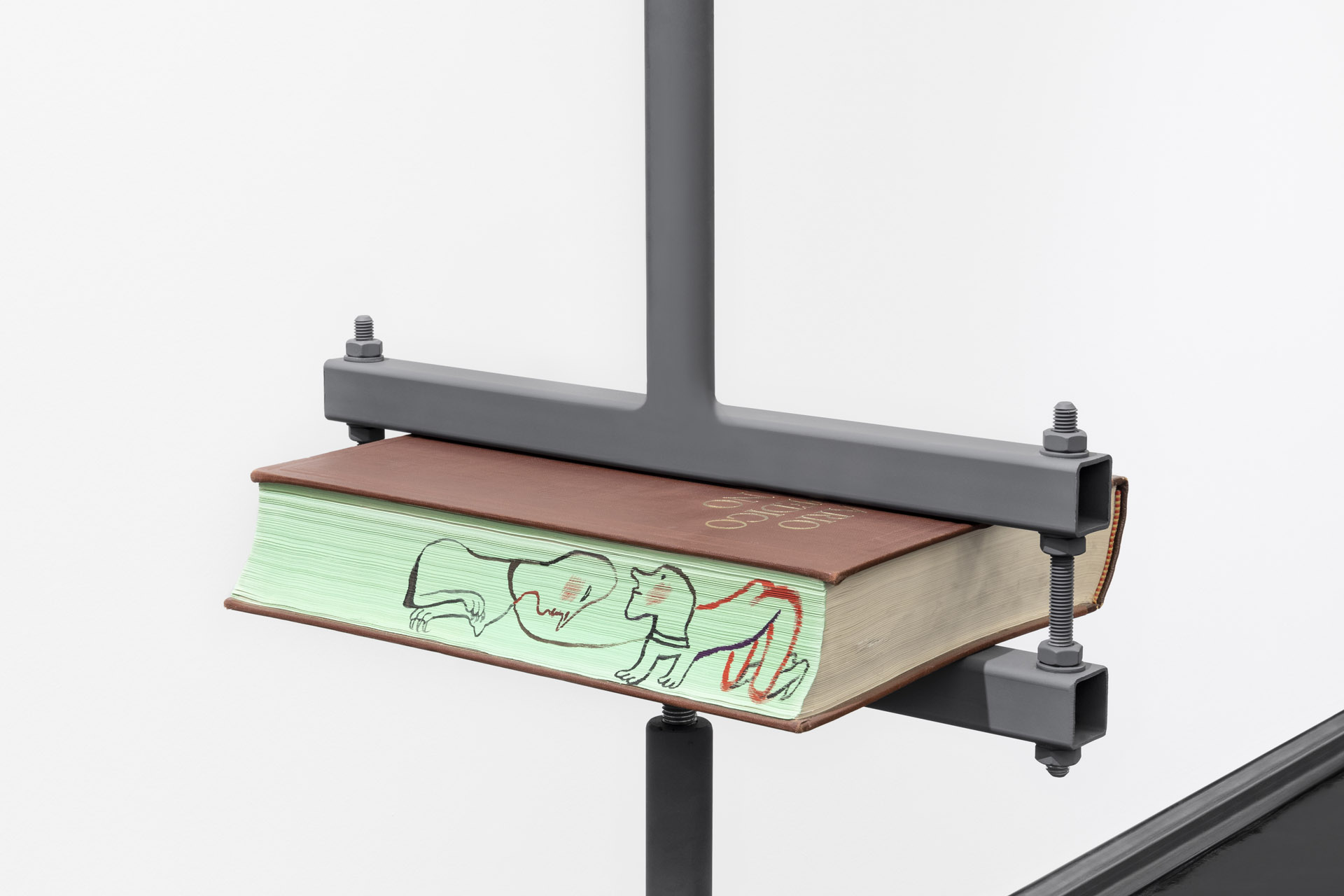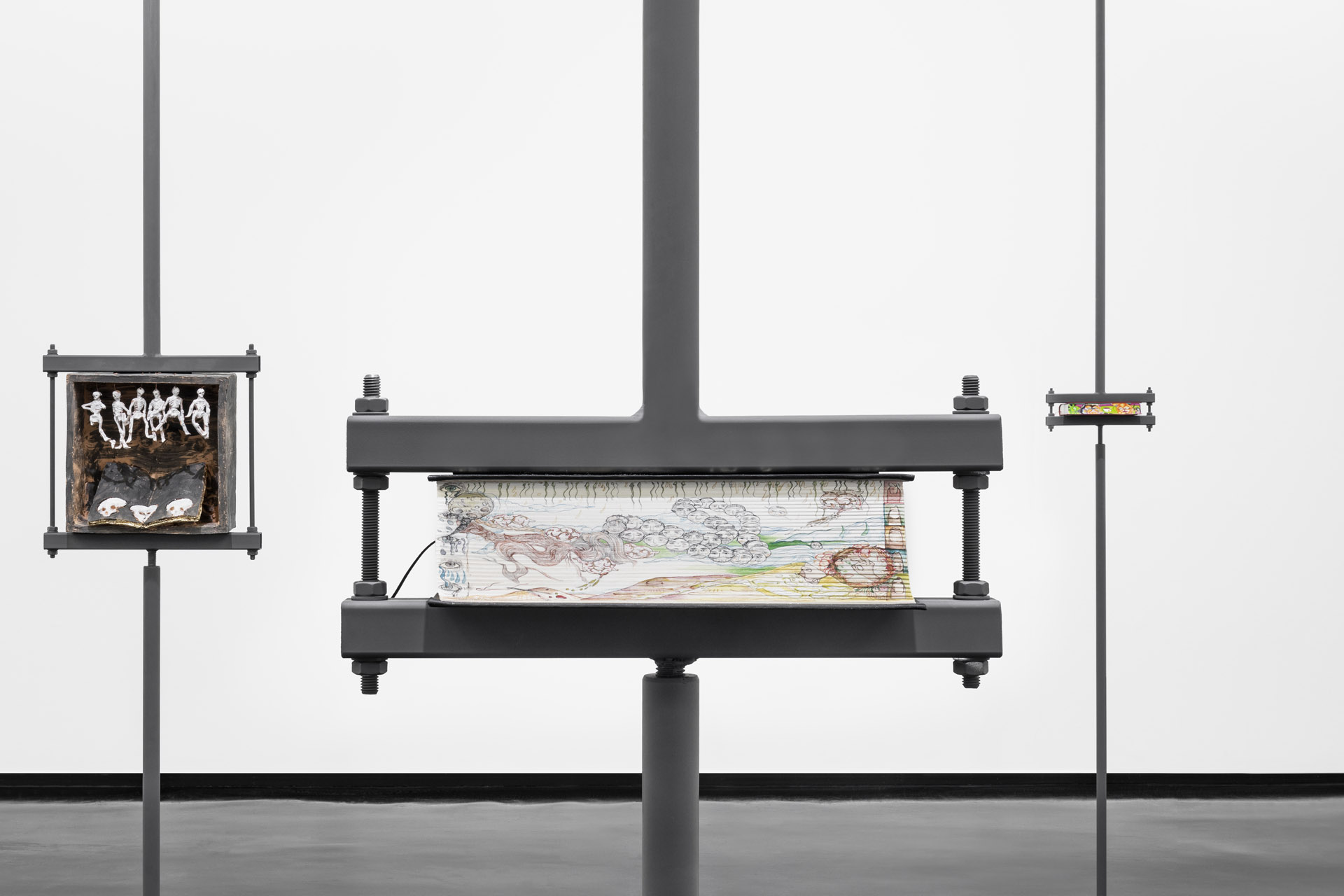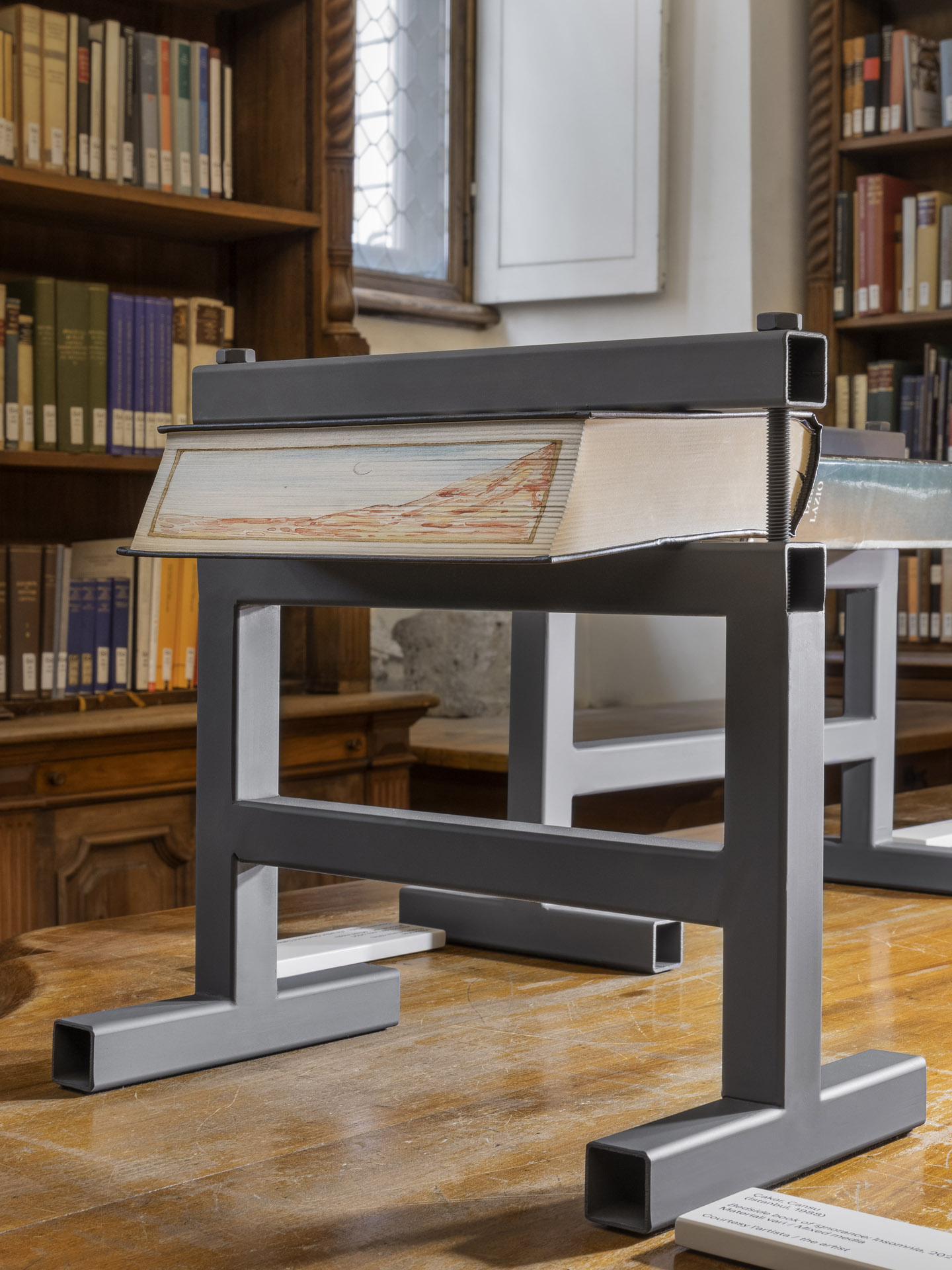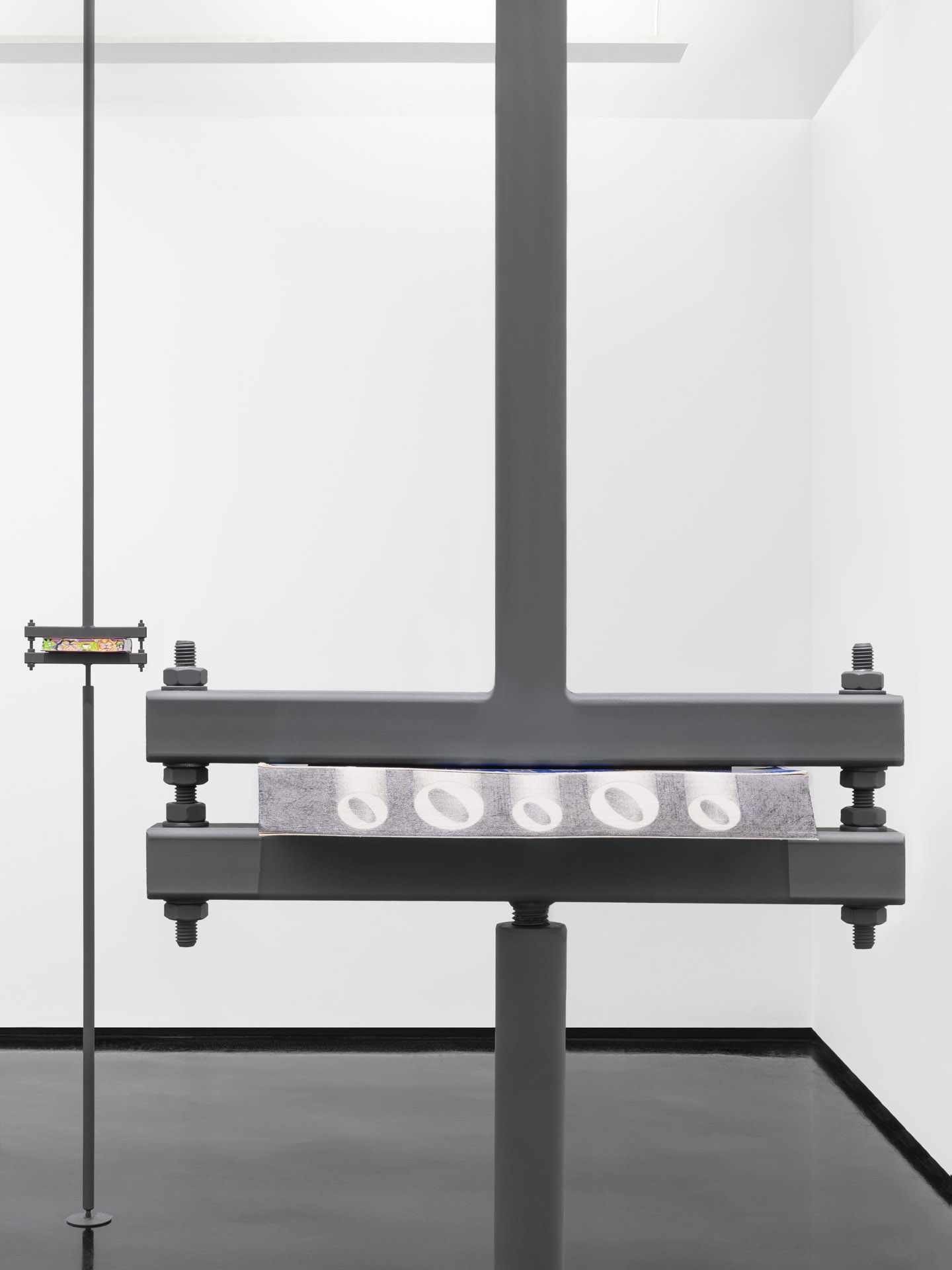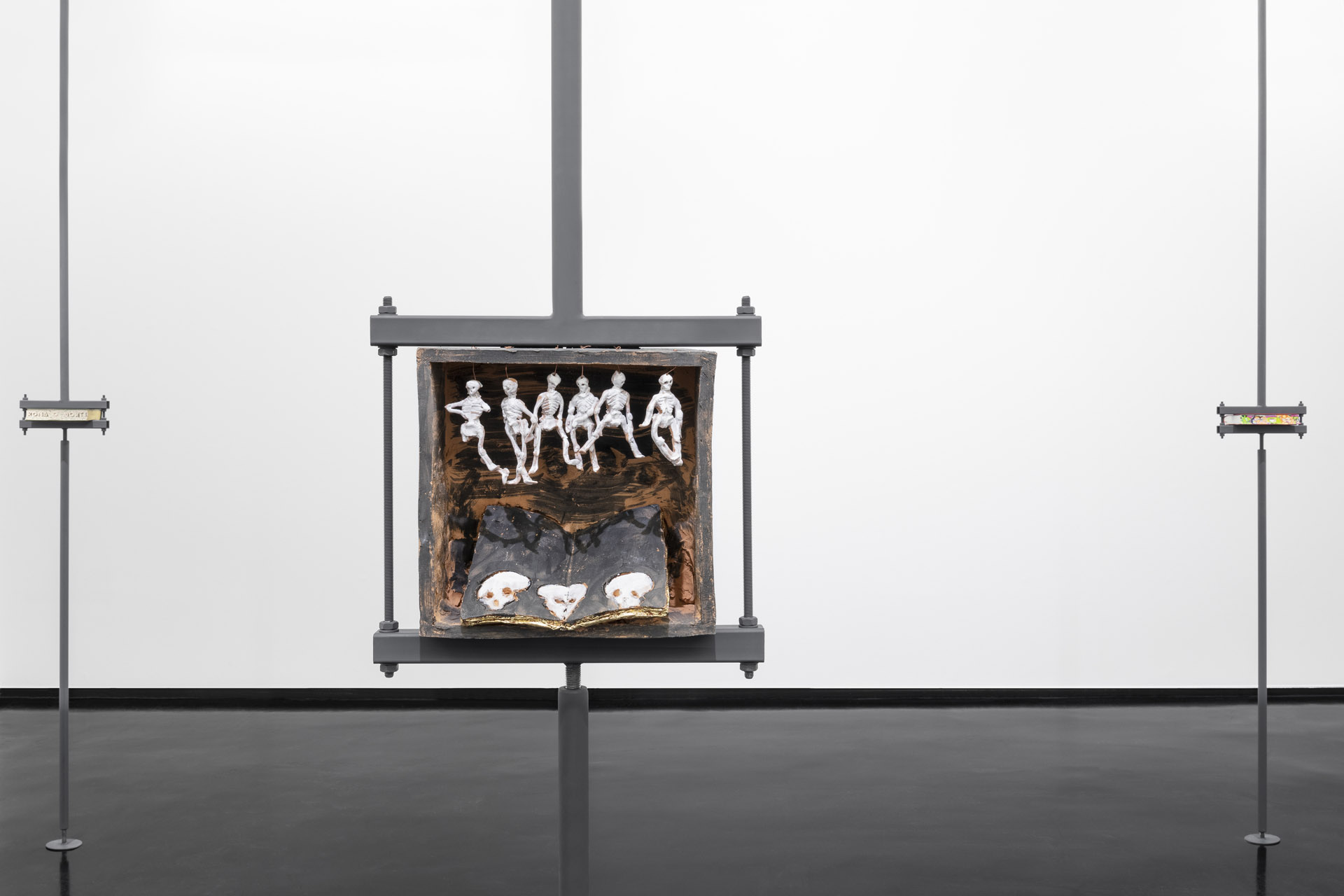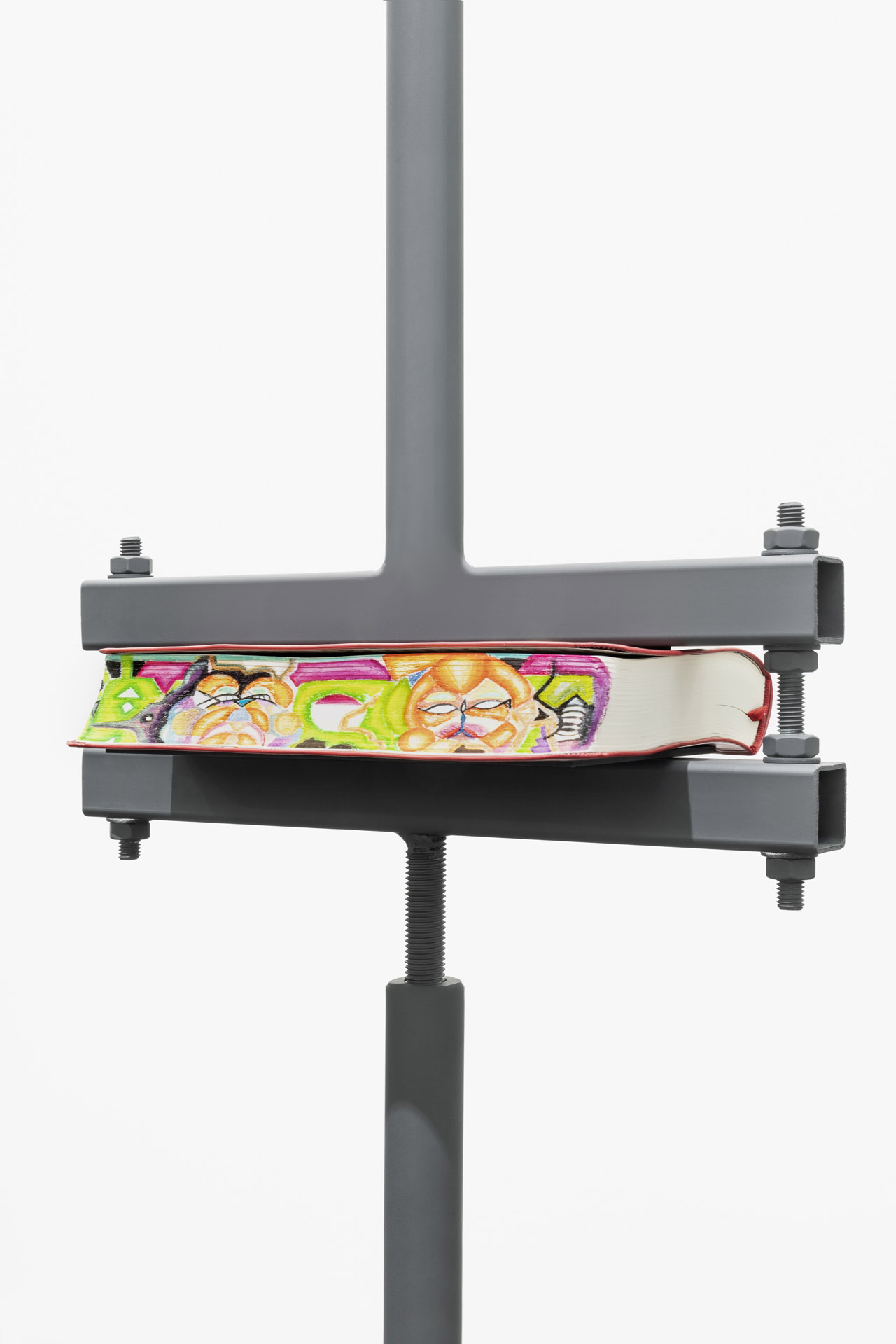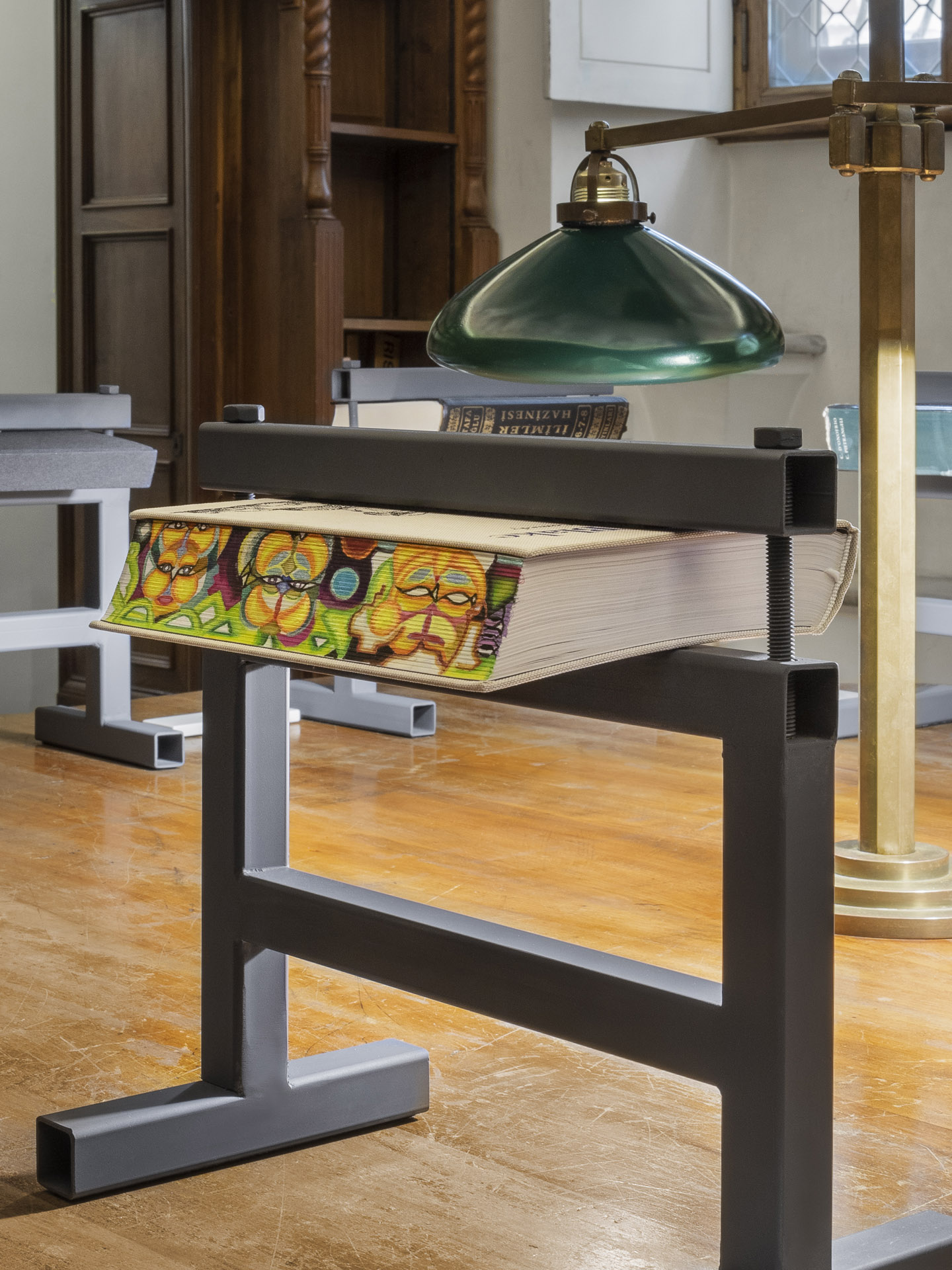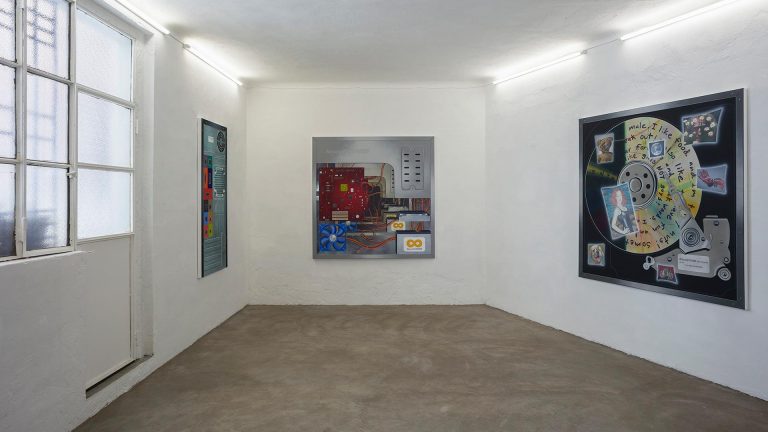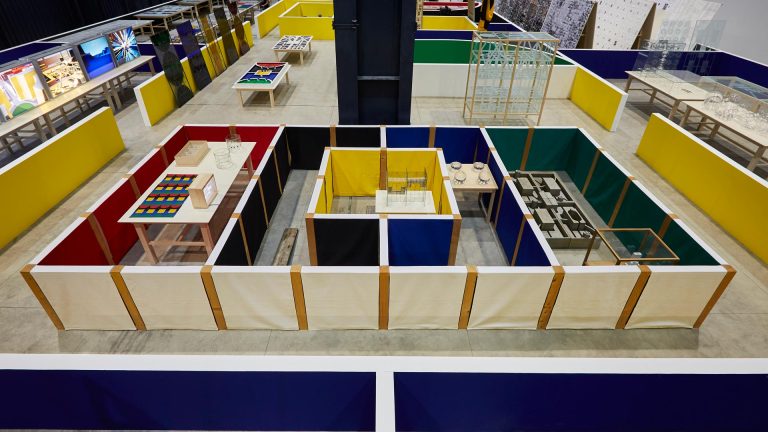Artists: Tauba Auerbach, Kerstin Brätsch, Cansu Çakar, Enzo Cucchi, Camille Henrot, Victor Man, Andrea Salvino, Andro Wekua
Exhibition title: Fore-edge Painting
Venue: MACRO, Museum of Contemporary Art of Rome, Rome, Italy
Date: September 28, 2021 – January 23, 2022
Photography: images copyright and courtesy of the artists, MACRO, Museum of Contemporary Art of Rome, and Bibliotheca Hertziana – Max Planck Institute for Art History
With Fore-edge Painting, the BIBLIOGRAPHIC OFFICE section of MACRO enacts a new exploration of the universe of publishing, addressing different contexts, time frames, places and practices of the contemporary and of the past. Eight international artists have been invited to freely come to terms with the historical tradition of decorating the fore edge of books with paintings and illustrations, giving rise to original works with a hybrid nature, which are sometimes invisible at first glance.
The practice of decorating and painting the vertical edge of the pages of books to indicate their content or their owner dates back to the Middle Ages, when volumes were stored lying down. Towards the end of the seventeenth century and during the following two centuries, this technique became popular in England, where artists and craftsmen began to make “disappearing” paintings on books—secret images that appear only when the pages are fanned. Floral decorations, landscapes, vernacular or erotic scenes were made by spreading the pages, often followed by the gilding of the edges to conceal the work.
The volumes selected and transformed into artworks by Tauba Auerbach, Kerstin Brätsch, Cansu Çakar, Enzo Cucchi, Camille Henrot, Victor Man, Andrea Salvino and Andro Wekua are displayed at MACRO and in the Sala del Disegno of the seventeenth-century Palazzo Zuccari, headquarters of the Bibliotheca Hertziana – Max Planck Institute for Art History since 1913, founded by the German collector and patron Henriette Hertz (1846–1913). The Sala del Disegno contains Hertz’s bookshelves that originally contained a nucleus which has expanded over the years, becoming one of the most important collections in the world of literature and resources on the history of art, Italian and Mediterranean culture. The frescos on the ceiling of the space were instead produced by the original owner, the painter Federico Zuccari (1539–1609), who designed the building and began its construction towards the end of the 1500s. The paintings pay homage to the figure of Drawing as the father of the arts (painting, architecture and sculpture), and as a key element of the speculative sciences, music, medicine and the military disciplines. An allegorical programme that emphasizes the intellectual emancipation of art, reflecting the intentions of Zuccari for his palazzo, which he created to contain an academy and residence for artists.
Within the lineage of this passion for art and publishing, Bibliotheca Hertziana and MACRO host Fore -edge Painting, to which each artist has made a contribution, based on free interpretation of the theme.
Interested in developing new tools and techniques in their work, starting with the know-how of crafts and the scientific disciplines, Tauba Auerbach has reformulated the practice of handmade lettering. Kerstin Brätsch chooses to paint two well-known illustrated volumes, The Red Book of Carl G. Jung and the Divine Comedy by William Blake, which both interpret—the first through the unconscious, the second with mysticism—a spiritual approach to artistic expression. The volumes of the Dizionario Enciclopedico Italiano painted by Camille Henrot playfully warn us about the dangers of the thirst for knowledge. The work by Turkish artist Cansu Çakar speaks of the pitfalls of knowledge based on superstition. With her drawings, she sets out to subvert the conservatism and fanaticism underpinning a popular anthology of “occult sciences”. Painter Victor Man dedicates his works to the Rome of the Appian Way and the Janiculum Hill, two of the artist’s favourite itineraries during his visits to the city. Andrea Salvino intervenes on found books, on which he has superimposed, often through contrast, fragments of imagery belonging to the history of cinema. With his subjective technique, Georgian artist Andro Wekua has transformed two volumes, including a catalogue of Georgian primitivist painter Niko Pirosmani. Finally, immersing it in his personal universe of symbols, Enzo Cucchi further explodes the theme of the exhibition into three-dimensionality.
Fore-edge Painting is thus a double exhibition, both playing with the ambivalence of these works and extending beyond the walls of the museum. On the one hand, it presents an unusual landscape composed of books decorated employing a technique from the past in a contemporary art museum. On the other, it brings contemporary painting into the historic spaces of one of the world’s most important libraries and research institutes on the history of art.
The exhibition has been organized in collaboration with Bibliotheca Hertziana – Max Planck Institute for Art History.
Fore-edge Painting, Exhibition view, MACRO, 2021
Fore-edge Painting, Exhibition view, MACRO, 2021
Fore-edge Painting, Exhibition view, MACRO, 2021
Fore-edge Painting, Exhibition view, Bibliotheca Hertziana, MACRO, 2021
Fore-edge Painting, Exhibition view, Bibliotheca Hertziana, MACRO, 2021
Andrea Salvino, Intérieur d’un couvent, 2021 Totò, 2021, Mixed media. Courtesy the artist, Fore-edge Painting, MACRO, 2021
Andrea Salvino, Intérieur d’un couvent, 2021 Totò, 2021, Mixed media, Courtesy the artist, Fore-edge Painting, Bibliotheca Hertziana, MACRO 2021
Andro Wekua, Pirosmani, 2021, Mixed media, Courtesy the artist and Gladstone Gallery, Fore-edge Painting, MACRO, 2021
Andro Wekua, Untitled, 2021, Mixed media, Courtesy the artist and Gladstone Gallery, Fore-edge Painting, Bibliotheca Hertziana, MACRO, 2021
Camille Henrot, Three Questions, 2021, Acrylic paint on paper, Courtesy the artist, Fore-edge Painting, MACRO, 2021
Camille Henrot, Three Questions, 2021, Acrylic paint on paper, Courtesy the artist, Fore-edge Painting, Bibliotheca Hertziana, MACRO, 2021
Cansu Çakar, Bedside book of consolation: Headache, 2021, Mixed media, Courtesy the artist, Fore-edge Painting, MACRO, 2021
Cansu Çakar, Bedside book of consolation: Insomnia, 2021, Mixed media, Courtesy the artist, Fore-edge Painting, Bibliotheca Hertziana, MACRO, 2021
Tauba Auerbach, oOoOo (The Art of Hand Lettering), 2021, Graphite on paper, Courtesy the artist and Paula Cooper Gallery, New York, Fore-edge Painting, MACRO, 2021
Tauba Auerbach, OoOoO (The Art of Hand Lettering), 2021, Graphite on paper, Courtesy the artist and Paula Cooper Gallery, New York, Fore-edge Painting, Bibliotheca Hertziana, MACRO, 2021
Enzo Cucchi, Senza titolo, 2021, Ceramic, Courtesy the artist, Fore-edge Painting, MACRO, 2021
Enzo Cucchi, Senza titolo, 2021, Ceramic, Courtesy the artist, Fore-edge Painting, Bibliotheca Hertziana, MACRO, 2021
Kerstin Brätsch, Ancestors field I, excerpt from Brut (Incubation), Para Psychic series, 2021, Watercolour and ink on paper, Courtesy the artist and Gladstone Gallery, Fore-edge Painting, MACRO, 2021
Kerstin Brätsch, Ancestors field II, excerpt from Brut (Incubation), Para Psychic series, 2021, Watercolour and ink on paper, Courtesy the artist and Gladstone Gallery, Fore-edge Painting, Bibliotheca Hertziana, MACRO, 2021
Victor Man, Gerusalemme liberata, 2021, Mixed media, Courtesy the artist and Gladstone Gallery, Fore-edge Painting, MACRO, 2021
Victor Man, Abbazie del Lazio, 2021, Mixed media, Courtesy the artist and Gladstone Gallery, Fore-edge Painting, Bibliotheca Hertziana, MACRO, 2021
Fore-edge Painting, Exhibition view at Bibliotheca Hertziana, MACRO, 2021
Fore-edge Painting, Exhibition view at Bibliotheca Hertziana, MACRO, 2021




